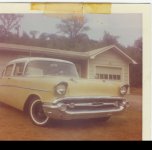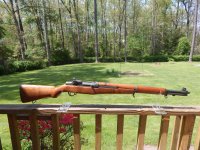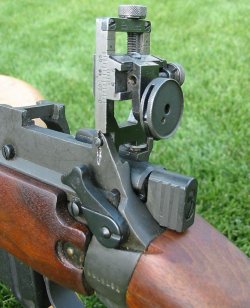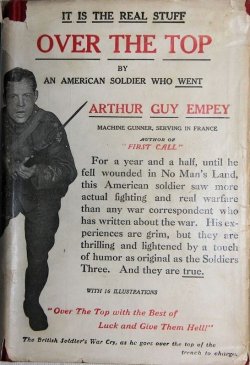The Mauser bolt action rifles were the very finest sporting and combat rifles ever made... I've read some consider the Lee-Enfield to be a better rifle.
Nothing could be further from the truth.
The Enfield has a very weak action. The rear mounted bolt lugs are highly prone to catastrophic failure with anything more potent than the underperforming .303 British....
The Mauser loads so dramatically quicker and smoother, with no chance of rim jam, that the difference in sustained firepower easily swings in the Mauser's favor
What are your thoughts? Do you agree or disagree?
Well, my thoughts are mostly those of amusement at all the cheering fanboy alternative facts, brought over from another reality. Unless you want to remove the "finest combat rifle" assertion and stick just with "finest sporting rifle". Then, you probably have a case you can much better defend.
First, the claims of LE's having a very weak action are generally the "everybody knows" spread amongst those with little knowledge of the rifle, or it's use in the military. As Reynolds and other writers involved with the arsenals developing and manufacturing the rifles have pointed out, you have to go well beyond oiled proof rounds to actually cause damage to the action, much less "catastrophic failures". Such failures happening in properly serviced rifles with normal ball or civilian ammunition are so nonexistent that they don't even achieve statistical significance.
With the tens of millions of various Lee Enfields built around the world over a century and a half, so many used in so many wars, so many sold at surplus to hunters and hobbiests, you would think the bloodstained trail of the victims of such a "very weak action" would be everywhere to see. Native populations in Canada would be decimated by now, given their standard for caring with firearms. And particularly around the Bubba reloading fraternity, trying to squeeze every last FPS out of their reloads. But it remains mostly the claims of those who know a guy whose sister's boyfriend had a brother whose girlfriend in high school said her uncle's Lee Enfield "catastrophically failed" while shooting some kind of ammunition he got from somewhere.
In short, it's on the level of the claims that the FN High Power's magazine disconnect will get you killed if you carry it for self defense. With millions similarly in military and police use for over 80 years, try finding instances where that actually happened. And yet those claims also survive.
As for claims of Mausers being superior on the battlefield as quicker and better at sustained firepower, I present as a reminder Sgt Snovell and his peers at the School Of Musketry at Hyath - and their students that they instructed on musketry. If I recall the specific numbers correctly, Snovell once scored 38 hits on the Second Class Figure Target set at 200 yards during that stage of qualification fire.
Offhand. In ONE minute. Doing reloads during that one minute from five round charger clips pulled from the British webbing at the time.


Others instructors at the musketry schools regularly got close to that mark, and one WO reportedly actually bested that score, mentioned in a book written about that time during WWI.
Sgt Snovell and his Musketry Instructor peers no doubt had ample opportunity to hone their speed and accuracy while instructing at the Musketry School. But the Brit squaddies they trained didn't have any problem passing that stage at 200 yards by "merely" putting 20+ rounds on that Second Class Figure Target, shooting under the same conditions before heading overseas to face the vile Hun in Europe.
I may have missed the military fans of the Mauser (Famous Second Place Winner Of Two World Wars) detailing how German instructors told Sgt Snovell et al:
Hold our schnapps while we show you how it's done with a quicker and smoother German rifle... but so far, no stories of anything close to that have yet to appear. Either in military annuls from that war or from the Mauser fans pushing the superiority of the Mauser rifle.
Strange...
Similarly, there were at least two instances I'm aware of in WWI where German officers reported they had been stopped when their troops came under concentrated machine gun fire. In reality, what was happening is that Sgt. Snovell's students were delivering fast and accurate Lee Enfield rifle fire, lessons learned and delivered from the instruction they were given.
Again... I am not a historian, but as far as I know, there is no evidence of Allied troops coming under fire from those German Mausers at such a speed and to such effect that Allied troops reported coming under massed German machine gun fire.
Again... strange.
Those are facts that should give some pause to reconsider their opinions on bolt action combat rifles (but probably won't).
Lee Enfields of various marks, primarily the Mk. 4 rifles, are still in regular use in bolt action Service Rifle type matches throughout the Commonwealth all the way out to 800 yards with the issue military sights. And CMP here in America. A well set up rifle is capable of 1.5 - 2 MOA over the course now that Mk VII ball is pretty much extinct and handloads are allowed.
Not exactly 1 MOA rifles, but competing against a similar surplus Mauser wearing it's original sights mounted forward on the barrel, regardless of grouping ability, that Mauser would have a hard time besting the Lee Enfield at those distances with it's wartime sights on a service rifle match.
There's more, but with the above in mind, all the alleged (and suspiciously unsupported) shortfalls of the various Lee Enfield actions during war is pretty much rubbish. Bullshiff repeated and passed around by detractors that in reality know very little about the Lee Enfield rifles, or about their use by so many nations in so many wars.
I had a very fine Chilean Mauser, and I have absolutely nothing negative to say about it or the Mauser military rifles in general. Many were put together by hand just as good or possibly better than Commonwealth armourers breeching up and fitting the draws by hand on No. 1 and No. 4 rifles. Mauser military rifles and their fans have nothing to feel bad about as far as the quality of their chosen rifles go. That Chilean Mauser was a beautiful rifle in all respects as military surplus, and I'd still have it if a friend who collected Mausers hadn't offered me more money than I was willing to refuse in order to keep it.
But it is simply imaginative Bullschiff to run down one rifle, one product, etc with "everybody knows" conspiracy theories to advance something else you're a fan of shifts back and forth between being puzzling and amusing. I would have a similar reaction if somebody similarly claimed you could make a more elegant hunting rifle from a surplus Lee Enfield than you could if you used a surplus Mauser instead.
And that's my thoughts and opinions that you asked for!















